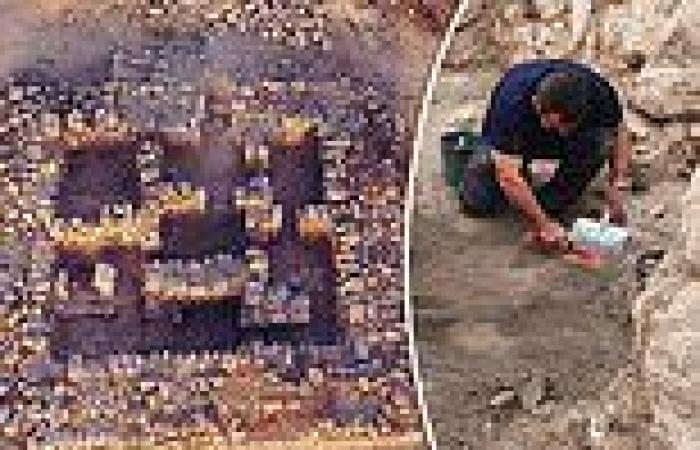The charred remains of a 2,100-year-old Greek fortress have been unearthed in Israel and experts say the scene provides 'tangible evidence of the Hanukkah story.'
Hanukkah, an eight-day Jewish celebration, honors the rededication during the second century BC of the Second Temple in Jerusalem, where Jews rose up against their Greek-Syrian oppressors in the Maccabean Revolt – and this stronghold was destroyed by Jewish rebels during the uprising.
The fortress, measuring 50 feet by 50 feet, was constructed of stone walls nine feet thick before it was burned to the ground during the Hasmoneans and Seleucids battle.
Hasmonean was a dynasty of Jewish Kings who fought to liberate Judea from Seleucid rule, which was a Greek dynasty reigning over a large portion of the Middle East.
The ancient battle began when the Hasmoneans spotted Seleucid soldiers stationed in the fortress that sat on a hill overlooking a hill overlooking the Hellenistic city of Maresha.
No fighting was done inside the structure, but the Jewish rebels knock down the roof that led to the walls collapsing – and then they set their enemy fortress ablaze.
Scroll down for video

The fortress, measuring 50 feet by 50 feet, was constructed of stone walls nine feet thick before it was burned to the ground during the Hasmoneans and Seleucids battle
According to Saar Ganor, Vladik Lifshits, and Ahinoam Montagu, excavation directors on behalf of the Israel Antiquities Authority, 'It appears that we have discovered a fortress, part of a fortified line erected by the Hellenistic army commanders, built to protect the large Hellenistic city of Maresha from Hasmonean offensive.
'Our theory is that the Seleucids blocked the entrance of the fortress and fled to the city as their enemies approached.'
Hanukkah commemorates the Maccabean, or Hasmonean, victories over the forces of the Seleucid king Antiochus IV Epiphanes who reigned from 175 to 164 BC and rededication of the Temple.
The revolt was led by Mattathias Maccabues and his son Judas, who were the first Jews who fought to defend their religious beliefs rather than their lives. of the restored Temple should be celebrated every year for eight days beginning on that date.

The charred remains (pictured) of a 2,100-year-old fortress have been unearthed in Israel, and experts say the






